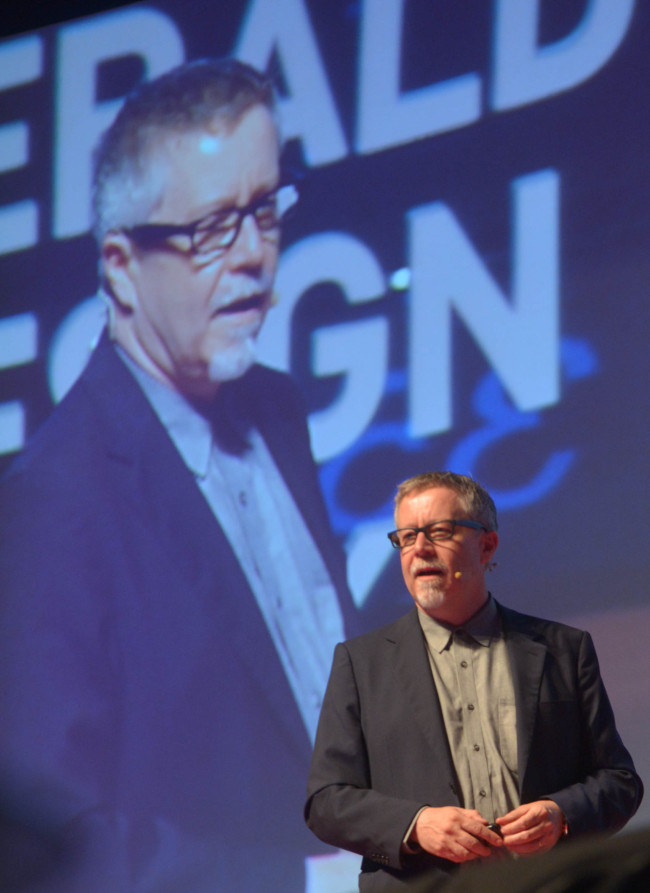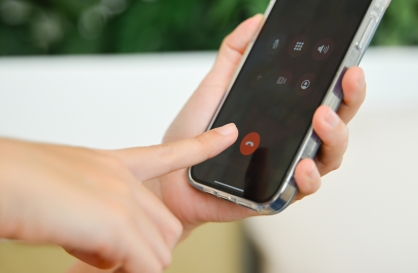
How does one succeed in today’s complex and volatile world?
IDEO’s CEO Tim Brown’s advice is: be Darwin rather than Newton.
“What Newton’s laws of motion do is that they predict the future based on the understanding of the present,” Brown said during his lecture.
“But the problem is it only works if the present is very, very simple. We can only use Newton’s laws to effectively predict the future of something if we are talking about two components, one thing hitting another thing. As soon as we have more pieces in the puzzle, Newton’s law actually doesn’t work.
“I believe what we have to do is think more like Charles Darwin. He discovered the laws of evolution. And I think as designers in the future, tackling complex problems, we need to think about some of the qualities of evolution. The fact that it comes from the bottom, the fact that it is constantly changing, and the fact that design is never finished.”
Brown, a leading figure in design thinking, talked about “seven transforming forces” that demand changes and innovation in contemporary design during the lecture. They are: from certain to uncertain; from simple to complex; from Newton to Darwin; from some to everyone; from centralized control to peer networks; from message to meaning; and from matters of industry to matters of life.
“The world has gotten much more complex, design has indeed gotten a lot more complex also,” he said. “We started being asked to design services and service systems for companies all over the world, such as the service of the pharmacy in a drug store. When I trained as a designer, I had no idea that I was going to be asked to design such things at some point in my career. So design is changing and it is changing fast. And we have to evolve to cope with that.”
During the lecture, Brown shared the case of Doug Dietz, who invented the famous “adventure series” scanners that have been hugely popular with kids. Dietz, who had been designing MRI and CT machines for more than 20 years, one day ran into a little girl who was crying because she was terrified to be scanned ― lying down alone inside the huge, noisy machine ― at a hospital.
“So Doug asked a technician, whom he stood next to, ‘Is this always a problem?’ And the technician said ‘Yes, we often sedate the kids in order to get them to go through this scanning experience.’
Dietz took the encounter as a creative challenge. He invented “adventure series” scanners that turned CT scanners into adventures. One of the series offers an immersive experience where the kids feel like they are entering a pirate ship. As a child goes through scanning, she or he will hear banging and crashing, and they will find some “pirate treasure” at the end.
Brown said the story of Dietz was a great example of what creative confidence can do for individuals as well as for the world.
“We all have creative talents,” he said. “But what many people lack is creative confidence. It turns out many people in all kinds of business face creative challenges and they don’t know necessarily how to tackle them unless they have the creative confidence.”
By Claire Lee (dyc@heraldcorp.com)
IDEO’s CEO Tim Brown’s advice is: be Darwin rather than Newton.
“What Newton’s laws of motion do is that they predict the future based on the understanding of the present,” Brown said during his lecture.
“But the problem is it only works if the present is very, very simple. We can only use Newton’s laws to effectively predict the future of something if we are talking about two components, one thing hitting another thing. As soon as we have more pieces in the puzzle, Newton’s law actually doesn’t work.
“I believe what we have to do is think more like Charles Darwin. He discovered the laws of evolution. And I think as designers in the future, tackling complex problems, we need to think about some of the qualities of evolution. The fact that it comes from the bottom, the fact that it is constantly changing, and the fact that design is never finished.”
Brown, a leading figure in design thinking, talked about “seven transforming forces” that demand changes and innovation in contemporary design during the lecture. They are: from certain to uncertain; from simple to complex; from Newton to Darwin; from some to everyone; from centralized control to peer networks; from message to meaning; and from matters of industry to matters of life.
“The world has gotten much more complex, design has indeed gotten a lot more complex also,” he said. “We started being asked to design services and service systems for companies all over the world, such as the service of the pharmacy in a drug store. When I trained as a designer, I had no idea that I was going to be asked to design such things at some point in my career. So design is changing and it is changing fast. And we have to evolve to cope with that.”
During the lecture, Brown shared the case of Doug Dietz, who invented the famous “adventure series” scanners that have been hugely popular with kids. Dietz, who had been designing MRI and CT machines for more than 20 years, one day ran into a little girl who was crying because she was terrified to be scanned ― lying down alone inside the huge, noisy machine ― at a hospital.
“So Doug asked a technician, whom he stood next to, ‘Is this always a problem?’ And the technician said ‘Yes, we often sedate the kids in order to get them to go through this scanning experience.’
Dietz took the encounter as a creative challenge. He invented “adventure series” scanners that turned CT scanners into adventures. One of the series offers an immersive experience where the kids feel like they are entering a pirate ship. As a child goes through scanning, she or he will hear banging and crashing, and they will find some “pirate treasure” at the end.
Brown said the story of Dietz was a great example of what creative confidence can do for individuals as well as for the world.
“We all have creative talents,” he said. “But what many people lack is creative confidence. It turns out many people in all kinds of business face creative challenges and they don’t know necessarily how to tackle them unless they have the creative confidence.”
By Claire Lee (dyc@heraldcorp.com)




![[Weekender] Korean psyche untangled: Musok](http://res.heraldm.com/phpwas/restmb_idxmake.php?idx=644&simg=/content/image/2024/05/02/20240502050841_0.jpg&u=)

![[Eye Interview] 'If you live to 100, you might as well be happy,' says 88-year-old bestselling essayist](http://res.heraldm.com/phpwas/restmb_idxmake.php?idx=644&simg=/content/image/2024/05/03/20240503050674_0.jpg&u=)










![[Herald Interview] Director of 'Goodbye Earth' aimed to ask how we would face apocalypse](http://res.heraldm.com/phpwas/restmb_idxmake.php?idx=652&simg=/content/image/2024/05/03/20240503050732_0.jpg&u=)
